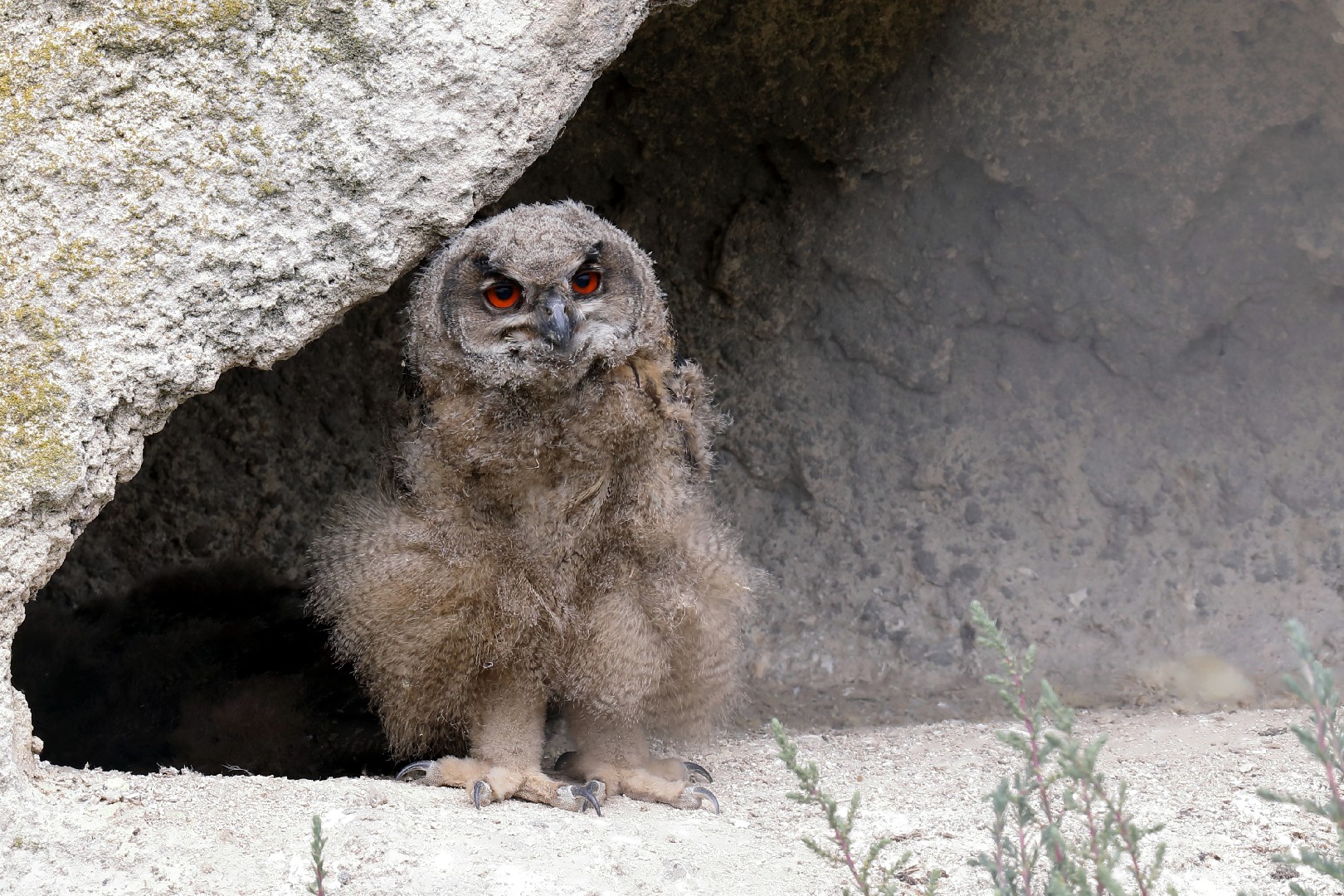 Where do eurasian Eagle-owl live?
Where do eurasian Eagle-owl live?
Where do eurasian Eagle-owl live?
Eagle-owls are distributed somewhat sparsely but can potentially inhabit a wide range of habitats, with a partiality for irregular topography. They have been found in habitats as diverse as northern coniferous forests to the edge of vast deserts. Essentially, Eurasian eagle-owls have been found living in almost every climatic and environmental condition on the Eurasian continent, excluding the greatest extremities, i.e. they are absent from humid rainforest in Southeast Asia, as well as the high Arctic tundra, both of which they are more or less replaced by other variety of Bubo owls. They are often found in the largest numbers in areas where cliffs and ravines are surrounded by a scattering of trees and bushes. Grassland areas such as alpine meadows or desert-like steppe can also host them so long as they have the cover and protection of rocky areas. The preference of eagle-owls for places with irregular topography has been reported in most known studies. The obvious benefit of such nesting locations is that both nests and daytime roosts located in rocky areas and/or steep slopes would be less accessible to predators, including man. Also, they may be attracted to the vicinity of riparian or wetlands areas, due to the fact that the soft soil of wet areas is conducive to burrowing by the small, terrestrial mammals normally preferred in the diet, such as voles and rabbits. Due to their preference for rocky areas, the species is often found in mountainous areas and can be found up to elevations of 2,100 m (6,900 ft) in the Alps and 4,500 m (14,800 ft) in the Himalayas and 4,700 m (15,400 ft) in the adjacent Tibetan Plateau. They can also be found living at sea-level and may nest amongst rocky sea cliffs. Despite their success in areas such as sub-arctic zones and mountains that are frigid for much of the year, warmer conditions seem to result in more successful breeding attempts per studies in the Eifel region of Germany. In a study from Spain, areas primarily consisting of woodlands (52% of study area being forested) were preferred with pine trees predominating the oaks in habitats used, as opposed to truly mixed pine-oak woodland. Pine and other coniferous stands are often preferred in great horned owls as well due to the constant density, which make it more likely to overlook the large birds. In mountainous forest, they are not generally found in enclosed wooded areas, as is the tawny owl (Strix alucco), instead usually near forest edge. Only 2.7% of the habitat included in the territorial ranges for eagle-owls per the habitat study in Spain consisted of cultivated or agricultural land. On the other hand, compared to golden eagles, they can visit cultivated land more regularly in hunting forays due to their nocturnal habits, which allows them to largely evade human activity. In the Italian Alps, it was found that almost no pristine habitat remained and locally eagle-owls nested in the vicinity of towns, villages and ski resorts. Although found in the largest numbers in areas sparsely populated by humans, farmland is sometimes inhabited and they even have been observed living in park-like or other quiet settings within European cities. Since 2005, at least five pairs have nested in Helsinki. This is due in part to feral European rabbits (Oryctolagus cuniculus) having recently populated the Helsinki area, originally from pet rabbits released to the wild. The number is expected to increase due to the growth of the European rabbit population in Helsinki. European hares (Lepus europaeus), the often preferred prey species by biomass of the eagle-owls in their natural habitat, live only in rural areas of Finland, not in the city centre. In June 2007, an eagle-owl nicknamed 'Bubi' landed in the crowded Helsinki Olympic Stadium during the European Football Championship qualification match between Finland and Belgium. The match was interrupted for six minutes. After tiring of the match, following Jonathan Johansson's opening goal for Finland, the bird left the scene. Finland's national football team have had the nickname Huuhkajat (Finnish for "Eurasian eagle-owls") ever since. The owl was named "Helsinki Citizen of the Year" in December 2007.
People often ask
Related Searches
Scientific Classification
Phylum
Chordates Class
Birds Order
Owls Family
True owls Genus
Horned Owls Species
Eurasian Eagle-owl 